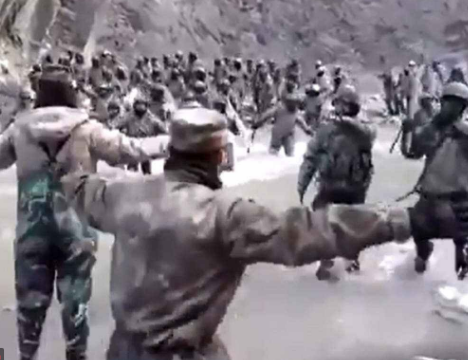Beijing: China’s ruling Communist Party has hailed the country’s military for conducting “major operations” on border defence, in a veiled reference to the eastern Ladakh border clash with India.
The high-profile Plenum conclave of the ruling Communist Party of China (CPC) held last week adopted the “landmark resolution” of its major achievements in the last 100 years besides clearing the decks for a record third term for President Xi Jinping next year and perhaps beyond.
The full text of the resolution released by the party Tuesday night has listed the contributions of Xi, the CPC’s General Secretary, in bringing revolutionary changes in the military to make the two million-strong People’s Liberation Army (PLA) a fit and fighting force.
After Xi took over power, China’s defence budget rose steadily, crossing over USD 200 billion this year. President Xi, 68, is also the Chairman of the Central Military Commission (CMC), the overall high command of the Chinese military.
“The armed forces have remained committed to carrying out military struggles in a flexible manner to counter military provocations by external forces, and they have created a strong deterrent against separatist activities seeking ‘Taiwan independence’,” the resolution said.
Without directly mentioning Chinese military’s aggressive moves in eastern Ladakh along the Line of Actual Control (LAC) with India last year, the resolution said that the PLA troops have “conducted major operations related to border defence”.
“They have conducted major operations related to border defence, protecting China’s maritime rights, countering terrorism and maintaining stability, disaster rescue and relief, fighting Covid-19, peacekeeping and escort services, humanitarian assistance, and international military cooperation,” it said.
The eastern Ladakh border standoff between the Indian and Chinese militaries erupted on May 5 last year following a violent clash in the Pangong lake areas and both sides gradually enhanced their deployment by rushing in tens of thousands of soldiers as well as heavy weaponry.
The tension escalated following a deadly clash in Galwan Valley on June 15 last year.
As a result of a series of military and diplomatic talks, the two sides completed the disengagement process in the north and south banks of the Pangong lake in February and in the Gogra area in August. The last round of military talks on October 10 ended in a stalemate.
The CPC resolution said the Chinese military has taken concrete actions to safeguard national sovereignty, security, and development interests.
“The people’s armed forces have strengthened their strategic forces and new-domain forces with new combat capabilities, and they have improved command systems and capacity for joint operations,” it said.
“They have worked hard to address ‘peacetime ills’, vigorously strengthened training under combat conditions, and built strong, well-structured, and modern border defence, coastal defence, and air defence systems,” it said.
The section of the resolution on the military titled “Strengthening national defence and the armed forces” has outlined the objectives set by Xi for strengthening the military and defined China’s military strategy for the new-era. The resolution said the PLA has formulated a three-step development strategy for modernising national defence and the armed forces.
These included achieving the centenary objectives of the PLA by 2027, basically completing the modernisation of national defence and the armed forces by 2035; and fully transforming the armed forces into world-class forces by the mid-21st century, it said.
The PLA has also accelerated efforts to modernise military theory, organisation, personnel, and weaponry and equipment and to integrate mechanisation with the application of information and smart technologies within the military, it said.
“Troop training and battle preparedness have been bolstered across the board. Through these efforts, China has adhered to its own path in building a strong military,” it said.
PTI






































